Transcription of Engine Upgrade Performance IO-470 to IO-550
1 Engine Upgrade PerformanceIO-470 to IO-550by David F. Rogersemail: dfr at appeared in the Newsletter of the Australian Beechcraft Society, June Engine is at TBO or beyond. It is now time to consider an overhaul, a factoryremanufactured Engine , or even an Upgrade to a larger Engine . For those of us with the 225bhp IO-470 or the 285 bhp IO-520 engines there is the temptation to Upgrade to a largerengine. For those with the IO-520 upgrading to the IO-550 is tempting. For those with the225 bhp IO-470 the tempation is to Upgrade to either an IO-520 or go all the way to on research, the difference in installed cost of a factory remanufactured IO-520 andan STC d factory remanufactured IO-550 is approximately $8,000. The Upgrade from anIO-470 to either an IO-520 or IO-550 is quite a bit more expensive. One STC holderestimates about $38,000 for the IO-520 Upgrade because it needs new exhaust manifoldsand pipes, cooling baffles, hoses, air duct, heat shield, Engine mounts, air box assembly,alternator conversion, the tachometer and manifold gauges remarked and recalibrated aswell as possibly new mixture, throttle and propeller cables, vacuum pump and propellergovernor.
2 It may be possible to use the existing propeller but, if not, than a new one isrequired at an additional $8,000. The price includes an exchange factory remanufacturedengine and the core Upgrade charge. Installation is extra. No additional gross weightincrease is currently available. In round numbers the Upgrade will cost between $46,000and $50,000 USD. The Upgrade from the IO-470 to the IO-550 definitely includes a newpropeller so figure on $50,000 because of the increased core Upgrade charge and a moreexpensive STC. The most recent STC does not require the addition of cowl flaps. However,based on experience flying an A-36 with an IO-550 conversion, I think I d add them Performance increase do these increased costs buy you? For example, what increasesin cruise speed and rate-of-climb can be expected from the increased horsepower? Engine Upgrade PerformanceCopyrightc 2003, 2006 David F.
3 Rogers. All rights there is considerable discussion about the different certification standards forthe IO-470 /IO-520 and the IO-550 . These engines were all certifiedwithoutaccessoriesattached (FAR ). The IO-470 and the IO-520 were certified at 225 bhp and 285 bhp respectively while the IO-550 was certified at 300 bhp +5% 0%. The accessorieson these engines are: alternator, vacuum (pressure) pump and air conditioner, if other operational parts of the Engine , , fuel pump, magnetos, oil pump, etc. wereattached when certified. With few aircraft fitted with air conditioners, that really leavesjust the alternator and vacuum (pressure) pump to absorb power. The vacuum (pressure)pump absorbs negligible power and in daylight cruise the alternator absorbs perhaps threebrake horsepower. Subtracting and the alternator loss leaves an estimated minimumof 216 bhp for the IO-470 (225 225 3 = 216) and 275 bhp for the IO-520(285 285 3 = 275).
4 Additional power losses result from back pressure in the exhaust system and pressure lossin the air intake system. However, the exhaust system on these engines is fundamentallyan open stack which results in minimum back pressure. Notice also that the air intake iscleverly positioned such that the propeller acts as a pump to increase the intake pressure asthe blades pass across the intake higher intake pressure results in more air in the cylindersand thus more power from the additional fuel that can be burned. The net result of thethese two effects is probably neutral, , no net power loss or , the estimated minimum installed brake horsepower for an IO-470 is 216 bhpand for the IO-520 is 275 bhp and the estimated maximum installed brake horsepower forthe IO-470 is 228 bhp (225 + 225 3 = 228) while for the IO-520 the maximum is289 bhp (285 + 285 3 = 289). Similarly the estimated minimum installed brakehorsepower available from an IO-550 is 297 bhp (300 3 = 297) and the estimated maximuminstalled brake horsepower is 312 bhp (300 + 300 3 = 312).
5 Subtracting the 3 bhpfor the alternator yields a nominal 222 bhp for the IO-470 , 282 bhp for the IO-520 and 297bhp for the 1 shows the calculated rate-of-climb versus TAS for a model E33A for 265, 275, 285,300 and 315 brake horsepower at a gross weight of 3300 lbs at sea level on a standard we plot the increase in rate-of-climb against the change in brake horsepower, as shown inFigure 2 for the IO-520 at 3300 lbs compared to 282 bhp as a base and in Figure 3 for theIO-470 at 3050 lbs on a base of 222bhp, we see that the rate-of-climb is directly related tothe change in horsepower. Can we explain this? that the rate-of-climb is calculated as the difference between thrust power available,ThPa, and power required to maintain steady level flight,Pr, divided by the aircraft weight,W. Recall also that the thrust power available,ThPa, is the Engine power at the propellershaft,Pa, times the propeller efficiency, (eta), Pa.
6 Thus, our rate-of-climbequation isRC=ThPa PrWAt the velocities for maximum rate-of-climb propeller efficiency is about 79%.For the small changes in power available, the velocity for maximum rate-of-climb does notchange significantly (about 3% for the IO-520 and about 7% for the IO-470 to IO-550conversions). Consequently, the power required does not change significantly. Let s assumethat the power required is constant, after all the airframe has not changed. Using theEngine Upgrade PerformanceCopyrightc 2003, 2006 David F. Rogers. All rights lbsSea levelClean315 bhp300 bhp285 bhp275 bhp265 bhp-1000-500500100015002000 Rate-of-climb, fpm50100150200250 Velocity (TAS), mph0 Figure of climb vs = 3300 lbsIO-520base HP = 282 Sea level2700 rpmFull power7000 ft2500 rpm75% powerChange in brake horsepower (hp)Change in max ROC (fpm)Figure in rate-of-climb vs change in brake horsepower; IO-520 at 3300 Upgrade PerformanceCopyrightc 2003, 2006 David F.
7 Rogers. All rights = 3050 lbsIO-470base HP = 222 Sea level2600 rpmFull power7000 ft2450 rpm75% powerChange in brake horsepower (hp)Change in maximum ROC (fpm)102030405060708090100 Figure in velocity vs brake horsepower; IO-470 at 3050 equation twice, once for the original power available and once for the new poweravailable and subtracting allows us to calculate the incremental change in rate-of-climb foran incremental change in thrust power availablerate-of-climb change =thrust power avail. changeweightor RC= ThPaW= BHPaWwhere ThParepresents the change in thrust horsepower available and BHParepresentsthe change in brake horsepower , if we calculate the increase in sea level maximum rate-of-climb for an Upgrade froma nominal IO-520 (282 bhp) to a nominal IO-550 (297 bhp) we have RC= ThPaW= BHPaW=( )(15)3300(550)(60) = 119 fpmwhere the 550 and the 60 are conversion factors so that the result comes out in feet perminute.
8 This is approximately the value shown in Figure the increase in sea level maximum rate-of-climb for an Upgrade from a nominalIO-470 (222 bhp) to a nominal IO-520 (282 bhp) is RC= ThPaW= BHPaW=( )(60)3050(550)(60) = 513 fpmand for a nominal IO-550 (297 bhp) is 641 fpm whichagain are approximately the Upgrade PerformanceCopyrightc 2003, 2006 David F. Rogers. All rights 1 also shows the increase in maximum speed at sea level. Note that when the rate-of-climb is zero the aircraft is in level flight. Thus, the intersection of the rate-of-climb curvewith the horizontal zero rate-of-climb line is the maximum level flight velocity. Figure 4shows the change in maximum velocity at sea level against the change in brake horsepowerfor both the IO-520 at 3300 lbs gross weight and Figure 5 shows the results for the IO-470at 3050 lbs gross weight. Notice that the change is not quite a straight line. Can we explainthis?
9 Yes you knew I was going to say that, because I want to show you some more math,didn t you?Remember that in steady level flight the thrust power available is equal to the power requiredand that the power required is made up of two parts; parasite power required and inducedpower required orPr= SL2fV3 parasite+2 SL1 e(Wb)21V effective inducedHere we are only interested in velocity so the equation simplifies toThpa=Pr= ConstantV3 parasite+KonstantV effective inducedwhere Constant and Konstant are , at high velocities the second term, , the effective induced power required is smalland can be neglected as a first approximation. Thus, the equation further simplifies toThPa=Pr ConstantV3 parasitewhich means that if the thrust horsepower available increases, the velocity only increasesas the cube root of the increase in thrust horsepower available, , the new velocity isapproximatelyVnew=3 ThPanewThPaoldVoldThis is rather discouraging.
10 For example, to double the maximum velocity the thrusthorsepower must be increased by a factor ofeightbecause the cube root of eight is two(2 2 2 = 8). By the way, this is why the lines in Figures 4 and 5 are not quite straight they are pieces of a cubic of us do not fly at sea level at maximum power but rather cruise at six to ten thousandfeet at 55% to 75% brake horsepower available. Here the propeller efficiency is about 85 88%. Let s rewrite the equation taking these factors into account. The result isVnew=3 cBHPnew cBHPoldVold=3 BHPnewBHPoldVold Note that for typical Bonanza cruise velocities this assumption underestimates the increase in , it does illustrate the fundamental difficulty in increasing the speed of an Upgrade PerformanceCopyrightc 2003, 2006 David F. Rogers. All rights in max TAS (mph)Change in brake horsepower (hp)7000 ft2500 rpm75% powerSea level2700 rpmFull powerE33AW = 3300 lbsIO-520base HP = 282 Figure of power available change on maximum and cruise velocity for an IO-520at 3300 in maximum TAS (mph)-551015202530 Change in brake horsepower (hp)-107000 ft2450 rpm75% powerSea level2600 rpmFull power102030405060708090100E33W = 3050 lbsIO-470base HP = 222 Figure of power available change on maximum and cruise velocity for an IO-470at 3050 Upgrade PerformanceCopyrightc 2003, 2006 David F.
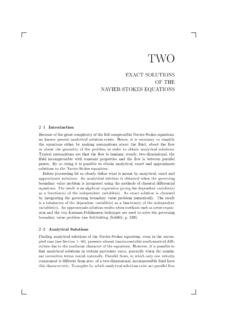

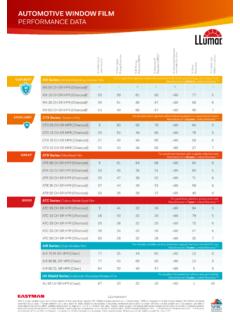
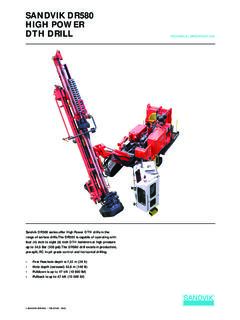

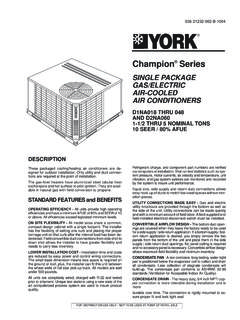
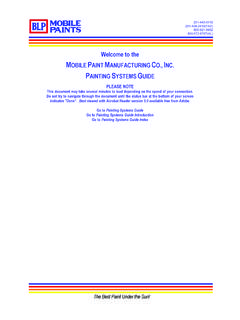
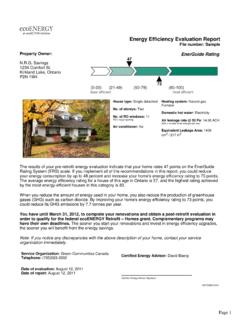

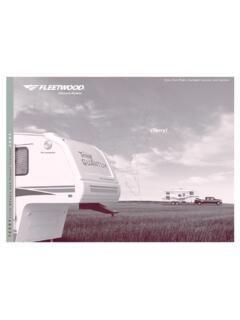
![INDEX [www.cjatelecoms.co.za]](/cache/preview/b/2/5/2/6/3/1/e/thumb-b252631e106fd605224c8893c343aaf6.jpg)